Peru's pre-Columbian art and architecture: A Consumer Guide
Fine walls, not so much to keep you out
Take the “consumer” in the title literally. This is not an attempt to assess the absolute quality of the sites reviewed here because how would I know? Rather, the grades are indications of the subjective experience of me and my spouse Jen (who’s responsible for all the good photos below; I took the bad ones) as we navigated Peru for two weeks, managing to dodge some but not all of sandflies, altitude sickness, E. coli, and COVID. People with different lung capacities, vaccination records, or heaven forbid different tastes might judge things otherwise. (Though aren’t album grades also indications of subjective experience in exactly the same way, you might ask? I’ll leave those who care to ponder this.)
MOCHE
Every Peru first-timer does the Gringo Trail and sees the Incan sites, and we weren’t going to be exceptional, but dozens of other cultures in the region had their day before the Incan century, and we wanted to get a sense of a couple of them before heading to higher altitudes, so upon arriving at Lima Airport, we caught another flight to the north coast city of Trujillo. The Moche culture, who thrived between the second and seventh centuries, are best-known for their pottery, but left monuments behind as well. We’d arranged a tour through Norte Expeditions (whom we recommend), and after a quick photo-op with the local phallic public art, our guide Dilser drove us out past the huge, ruined pyramid the Huaca de Sol to the Museo Huacas de Moche. The Museo Larco’s collection (see below) is much vaster, yet there’s added charm when the artifacts are at their place of origin and given space to breathe.
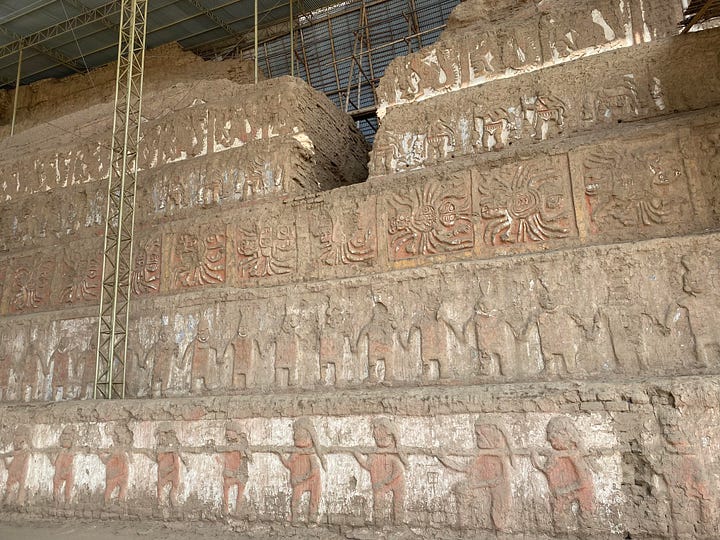

To me, the most affecting of the pottery heads on display wasn’t one of the physiognomically individualized portrait vessels, but a sort of tronie of a priestess; her emotion’s not quite readable but it’s clear that emotion exists. Then the Huaca de la Luna is fascinating, with some of the most complex pre-Columbian painting. Sometimes you can see three different periods, spanning centuries, at one time. Mind-expanding.
Grade: A
CHAN CHAN
On the other side of Trujillo lies the largest adobe city in the Americas, home of the palaces of the Chimú, who succeeded the Moche. The spareness of Chan Chan is much more of an acquired taste than the Moche sites, and very little of the site is open: of the ten major compounds, only Nik An has been mostly excavated, and even there many routes usually open to the public were roped off. Yet if you’re the sort of person who finds deep meaning in, say, Richard Serra, you might get something similar out of Nik An.
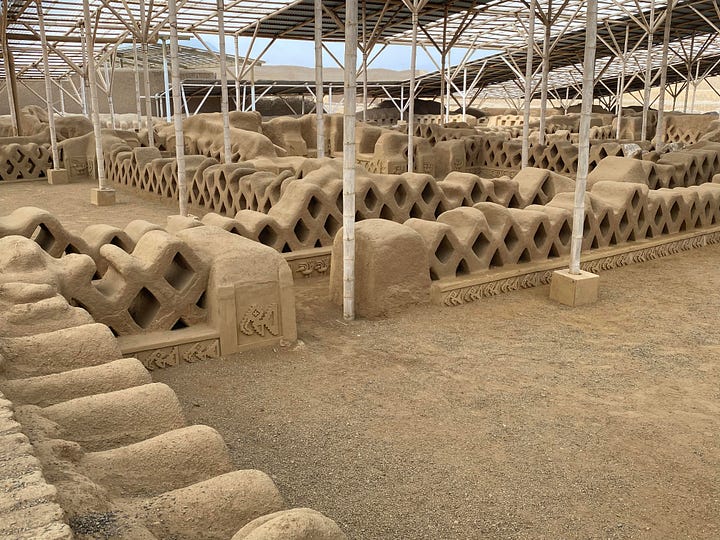
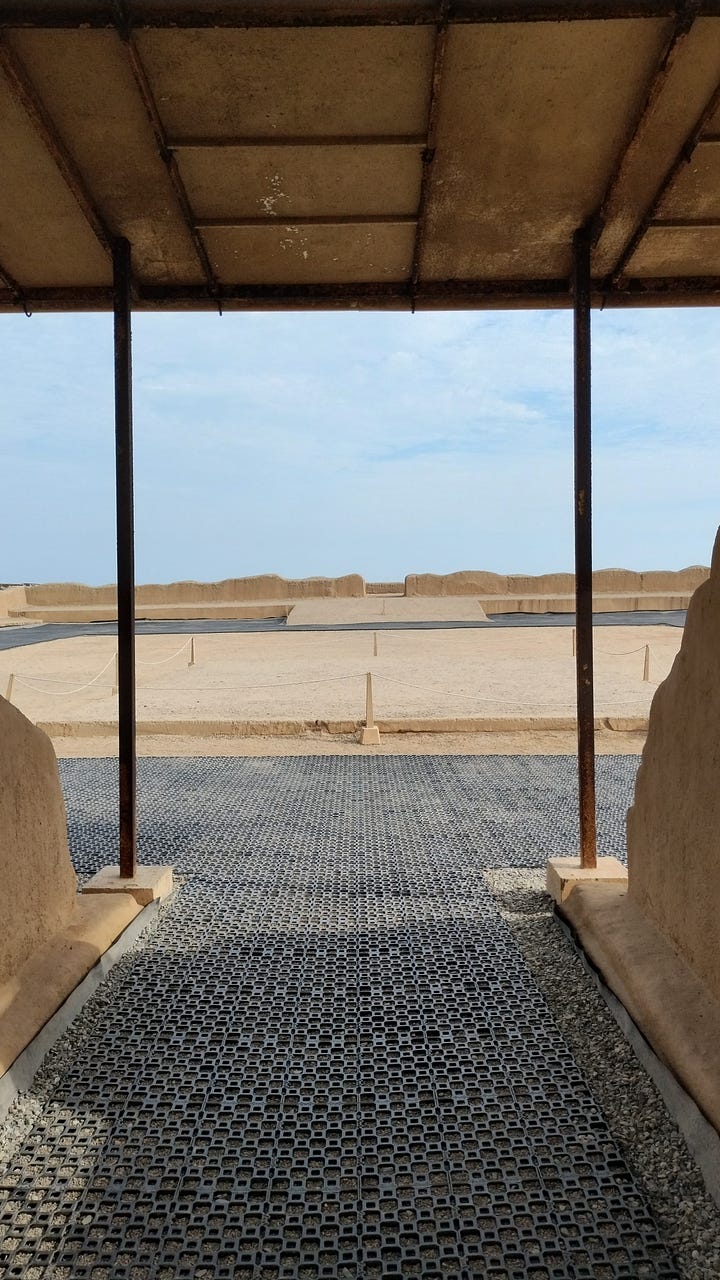
The outer parts are decorated minimally, with repeated geometric patterns. As you get closer to the innermost sanctums, the decoration gets even more sparse, until you reach the last inaccessible spaces. At the point there’s a sense of vastness, space standing in for time, the past unreachable but just over there.
Grade: A MINUS
OLLANTAYTAMBO
Ollantaytambo was the first really touristy place we visited: at a manageable 9000 feet (significantly lower than Cusco), it’s a good place to acclimatize for a couple of nights. Ollanta’s Incan terraces are among the better ones of the admittedly many survivors, and the Temple of the Sun (six massive aligned monoliths) is impressive enough. But it’s the other side of town, with its kancha courtyards and the narrow alleyways between them, that really makes the place distinct.

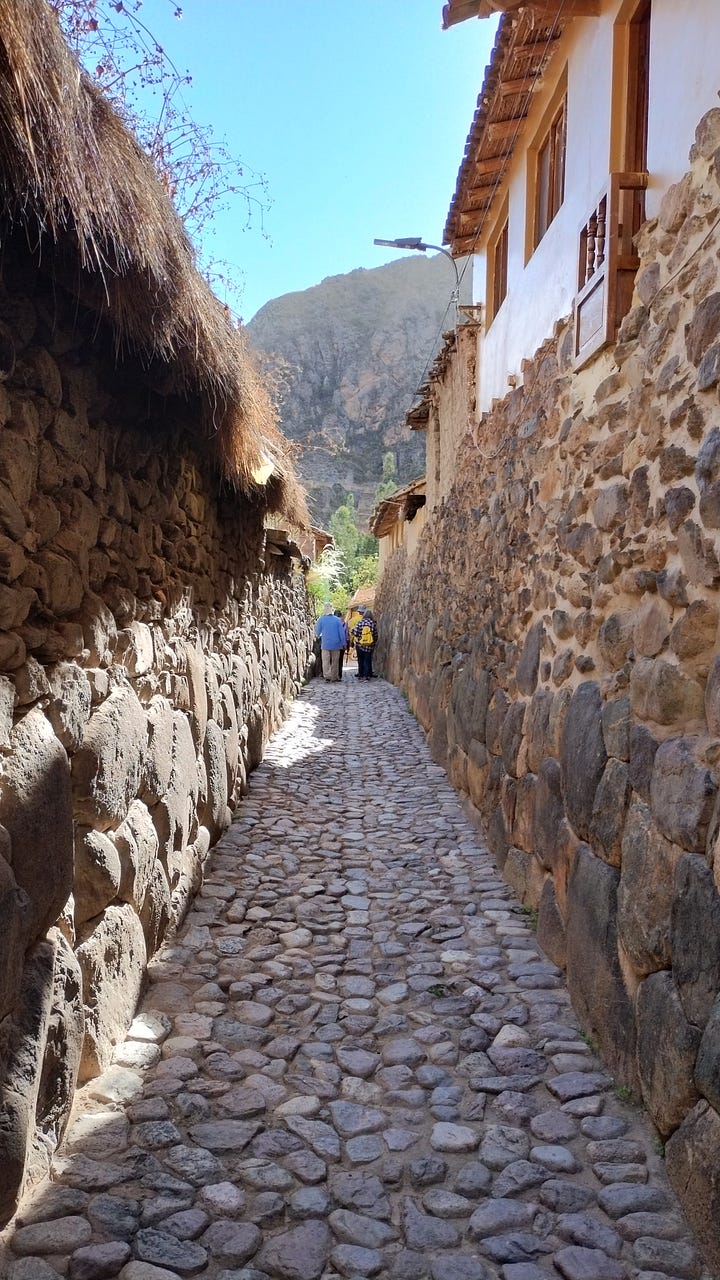
The buildings are among the longest continuously occupied structures in the Americas: so what if the most accessible ones are inviting you in to see the guinea pigs and sell you knick-knacks? It’s all tourism. And if you want to see a living city, it’s not hard to peek into places and see locals partying like it’s 1499.
Grade: A
MACHU PICCHU (LOSERS’ CIRCUIT)
You know it’s great, so let me focus on how it’s annoying. Foremost, you can’t see all the most renowned sights (the Guardian Hut; the Intihuatana; the Temples of the Sun, Three Windows, and Condor) on one visit. I suppose if you got an 8 am Circuit 2 ticket, you could make it to the time-limited sights and probably cut across to the one your ticket missed (the Temple of the Sun) without anyone who can do anything about it complaining, but this is a lawful neutral Substack, and anyway, I only booked six weeks in advance instead of seven and had to settle for the Losers’ Ticket (Circuit 4.) There were still astonishments.

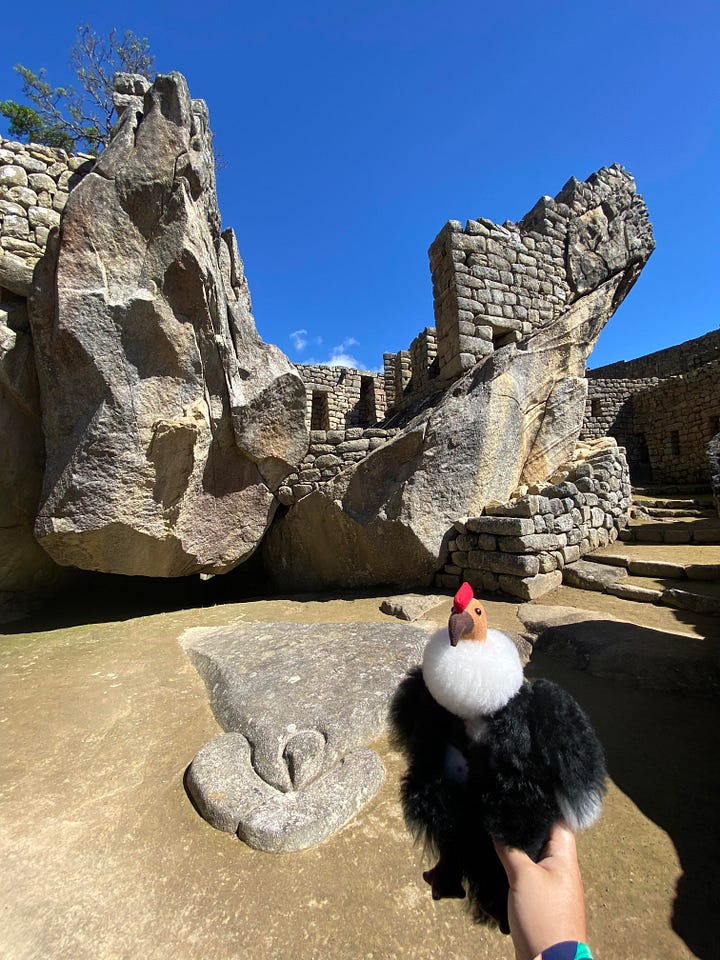
The impression is of a city (even if the population wasn’t that large), and a more elite one than Ollantaytambo. The Temple of the Sun is maybe the single most impressive building I saw on the trip, and the variations in the houses show how well the Incans could tailor their buildings to the natural environment. Plus I got to do a 20-minute (up and down) speed run of Huchuy Picchu, which was worth the view. Still, there’s no bathroom and you have to dodge large tour groups to see anything, so let’s round down.
Grade: A MINUS
PÍSAC
Písac was another town we decided to visit in part for its elevation, intermediate between Ollantaytambo and Cusco. Its fame, besides a Sunday market (we went on a Thursday) is a set of terraces even more terrace-y than Ollantaytambo’s. We took a taxi to the top of the ruins and asked the driver to wait for us for seventy minutes; we were back in sixty-seven. Here had the lowest tourist per square meter ratio of any of the major sites, which came as something of a relief.


The top of the terraces gives probably the best valley view we saw in the country, and the buildings are of some interest. The one major limitation is the main path from the top of the ruins back to town is blocked off; it’s possible to go around but we were too tired to risk any extra climbing at that point of our trip and thus we only saw the upper portion of the site; conceivably add a notch to the grade if you’re more energetic.
Grade: B PLUS
MUSEO INKA, CUSCO
Very old school, but for five bucks, it’s fine. I liked the turquoise miniatures and the scale models and I might have learned something. Plus at least one of the “push a button to turn on the LEDs” displays even worked.
Grade: B PLUS
QORIKANCHA, CUSCO
This was the holiest Incan site, which of course meant the Spaniards tore most of it down and built a convent on top. I was mostly interested in the Incan walls, whereas the other tourists there seemed mostly interested in everything but the walls. Some ancient rooms and doorways survive, and tour guides freely speculate about what might’ve gone on inside without being entirely convincing.

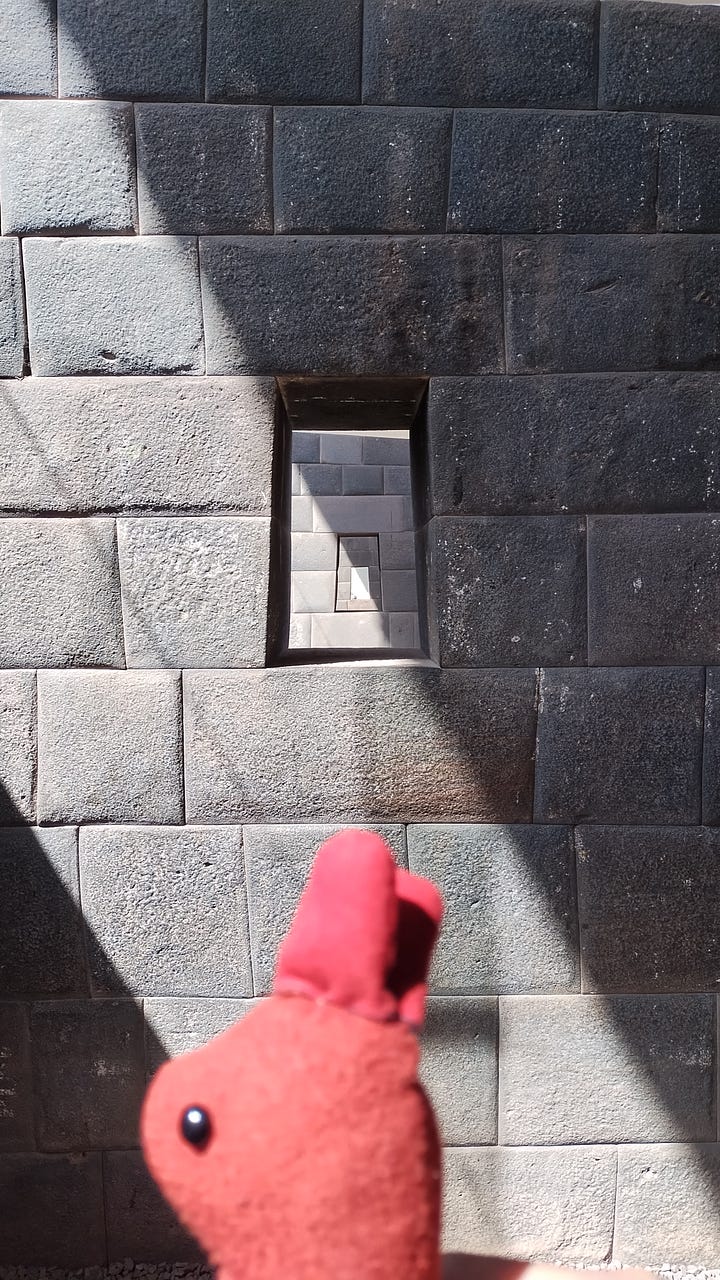
But the main draw for me was the curved wall; you can see it without entering, but you can get an up-close view if you just pay the twenty soles. It might be the most elegant pre-modern wall of its size I’ve seen (though I still need to get to Greece at some point in my life.) For masonry freaks mostly.
Grade: A MINUS
SACSAYHUAMÁN
This has the advantage of not being nearly as heavily regimented as Machu Picchu, though there are whistleblowers here and there in case you get too rowdy. You can wander around without having to stick to a pre-determined path! Even more importantly, this is probably the site where human-made and natural wonders best complement each other.

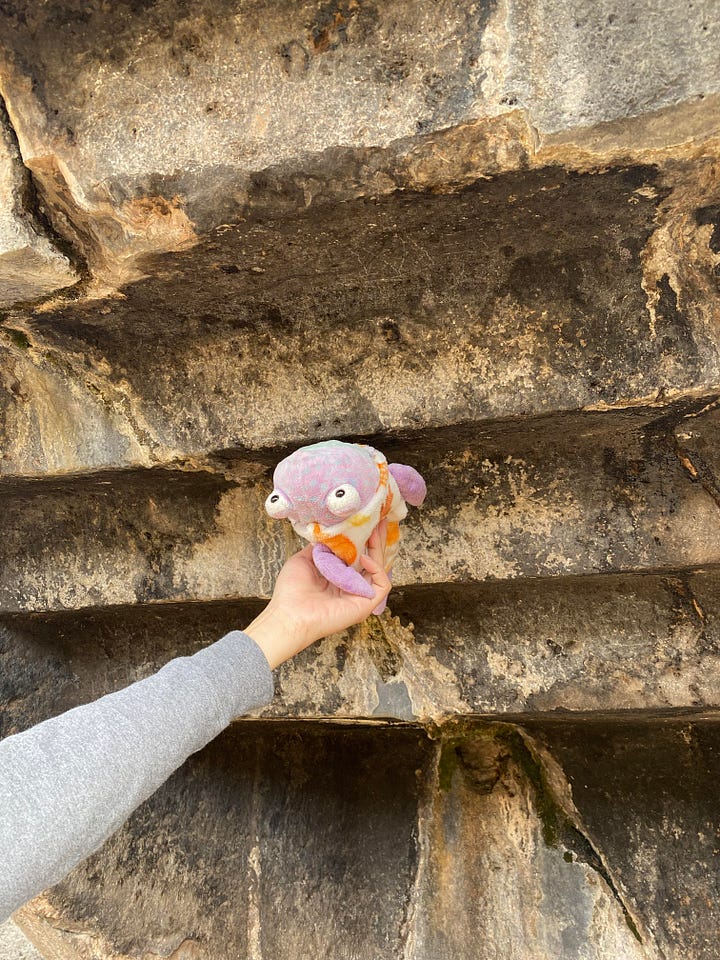
The striped channels of the Rodadero were mostly formed through faulting, but they’ve been polished through centuries of sliding asses, from Garcilaso de la Vega’s to mine. The zig-zagging walls just fit the landscape so well. The non-culinary highlight of our trip, and if we’d managed to find the tunnels this might’ve got the very highest grade.
Grade: A
MUSEO LARCO, LIMA
Renowned for its erotic collection, which might outdo that of the National Archeological Museum in Naples. Certainly it puts paid to the fiction that people in the past only had sex for procreation: there are lots of acts depicted from which pregnancy is, uh, implausible.
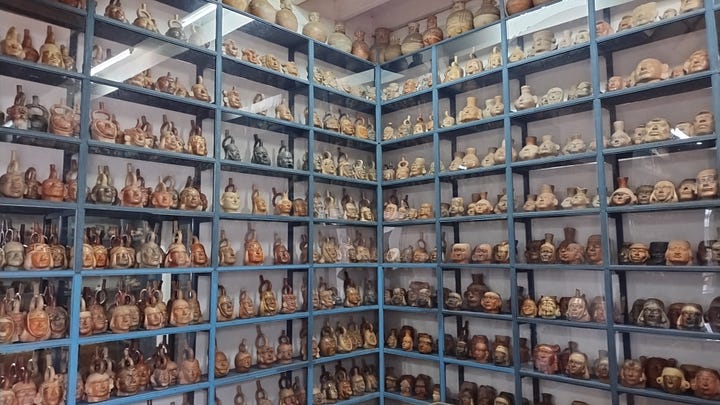
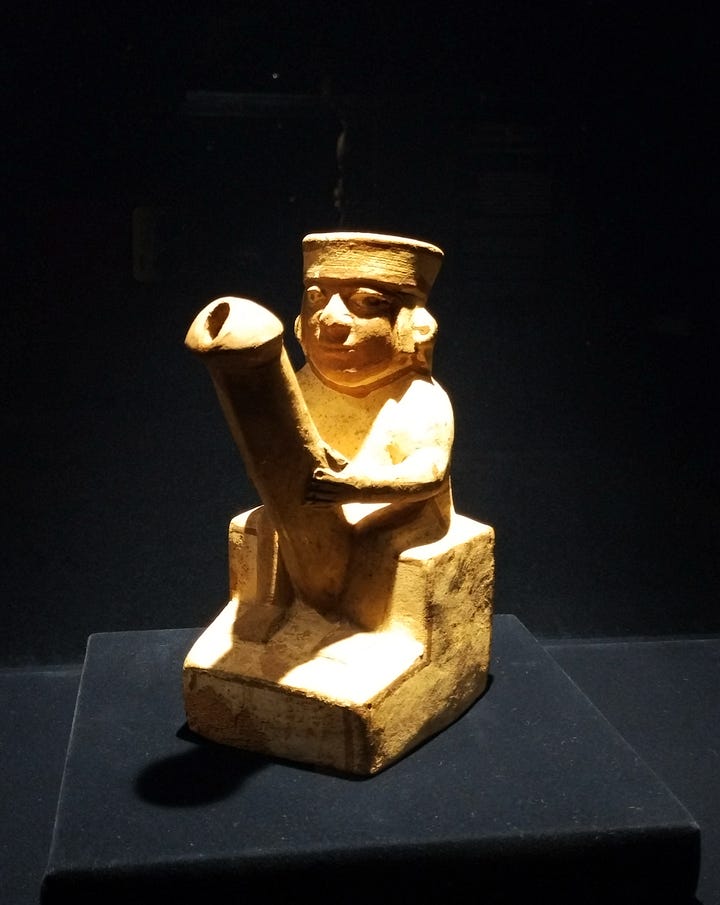
But there’s more to the Larco than big dicks and fellatio. They have major works from the Nasca, Paracas, Huari, and Chimú cultures, resulting in perhaps the most comprehensive collection of pre-Columbian Peruvian art (their main rival is the inevitable Met.) Maybe the most jaw-dropping feature is the open storage area, where tens of thousands of Moche and other ceramics sit like books in a library stack, letting you see all the variations artisans could make on a single theme. Good luck getting the Met to show you everything they have.
Grade: A
Bonus track: TRANSMILENIO BUS RAPID TRANSIT, BOGOTÁ
On the way home we dropped into Bogotá to eat things and to visit their Museo del Oro; the Muisca Raft is great and the rest of the collection is impressive enough, solid A MINUS. But arguably the most memorable experience for the one of us obsessed with public transportation was taking the TransMilenio BRT there and back. They have the most incomprehensible rapid transit map I’ve ever seen.
You pick the letter or a letter corresponding to general direction you’re going in, but different buses with the same letter have different stops, you have to either hastily use your phone to check if a bus is going where you want to go in the ten seconds before it arrives, or just get on and hope for the best. That you then have to deal with hawkers trying to give you very special pen for just a few thousand pesos is just a bonus. Transfers we’ll leave for locals and geniuses. By the time you exit, reeling, into a crowd of a million more stalls and shops trying to sell you the most off-model knock-off plush toys you’ve seen, you’ll have a sense of how bewildering Latin America can be.
Grade: A MINUS
Next week: The best restaurant in the world, and other culinary fictions.

